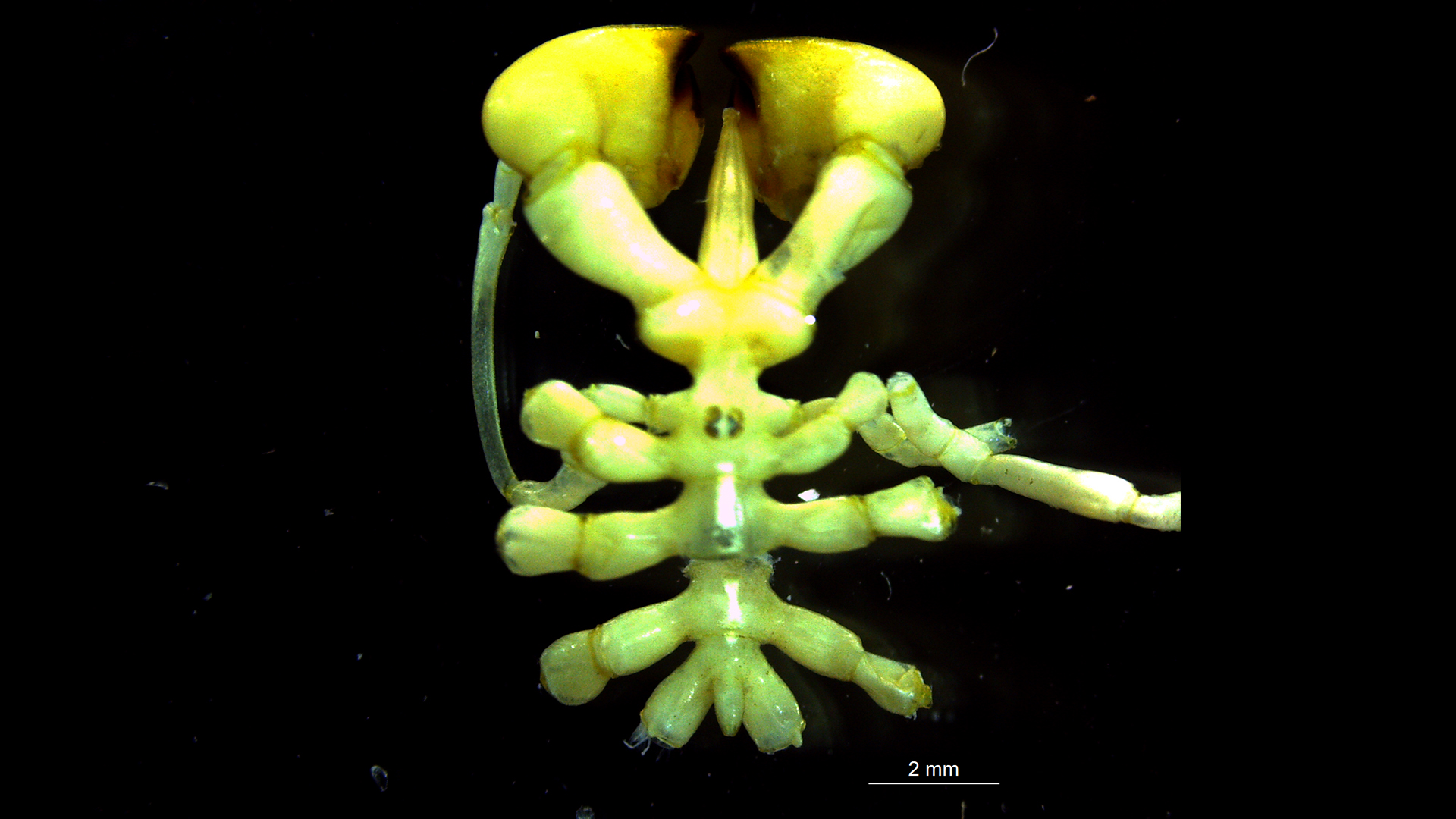
A strange, yellow, spider-like creature with four near-black eyes and large bulbous claws has been pulled from the depths of the ocean off Antarctica.
The never-before-seen animal is a sea spider — a distant relative of horseshoe crabs and arachnids that live on the ocean floor, eat through a straw-like proboscis instead of a mouth and breathe through their legs.Scientists have discovered more than 1,000 species of sea spiders all over the world.
The newfound species, Austropallene halanychi, was pulled from the ocean floor in the Ross Sea, about 1,870 feet (570 meters) below the surface. In addition to all the other weird things about sea spiders, the new species has large claws that look like "boxing gloves," which it likely uses to grab hold of soft foods like anemones and worms, study co-author Andrew Mahon, a biologist at Central Michigan University, told Live Science. The study was published Nov. 28 in the journal ZooKeys.
A. halanychi's body is about 0.4 inches (1 centimeter) long, but its legs stretch nearly 1.2 inches (3 cm) long. That gives the species the spindly look typical of many sea spiders — though some species can grow much larger, reaching nearly 2 feet (60 cm) wide.
Related: Sea spiders can regrow their anuses, scientists discover
What's more, this new species is likely just a drop in the bucket when it comes to the undiscovered wildlife living at the bottom of the Southern Ocean — an ecosystem home to everything from brightly colored sea stars and otherworldly marine worms to sponges and cold-water coral.
"The benthic environment in Antarctica is an area of science that we need to keep exploring," Mahon said. "There's so much down there that every time we go, we find new things."
To learn more about this environment, researchers drop nets deep underwater to pick up whatever might be hanging around at the bottom. After pulling the nets up, they sort everything they caught and preserve each specimen before shipping them back to labs for further analysis.

But with so many potentially new species to describe, it can take time to go through all the samples. A. halanychi was first pulled up in 2013 by the Nathaniel B. Palmer, a U.S. research vessel. Recently, Mahon and his colleague Jessica Zehnpfennig took it out of storage and identified it as a species new to science by analyzing its body shape and genetics.
Yet researchers may also be running out of time to study the Antarctic seafloor. As the climate keeps changing, warmer waters may threaten the future of some of the species living in this isolated and unique ecosystem, Mahon said. One of the reasons that researchers keep studying the Antarctic seafloor, he said, is to help describe and protect this biodiversity before it’s too late.







